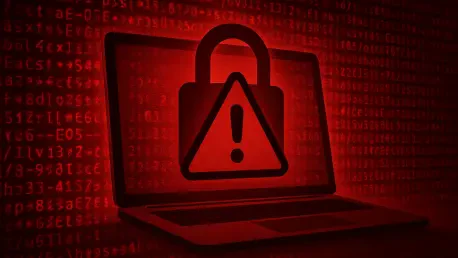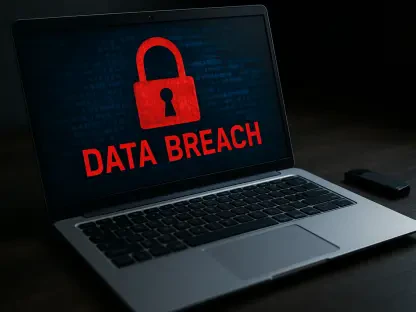In recent times, the rise in ransomware attacks has mounted significant pressure on businesses worldwide, especially those heavily relying on legacy systems. Notable incidents at major retailers like Marks & Spencer and the Co-op have spotlighted the vulnerabilities these older infrastructures face. As defenders scramble to shield sensitive data from increasingly sophisticated threats, these attacks underscore a crucial need for industry introspection and innovation.
Examining Recent Ransomware Incidents at Major Retailers
The ransomware attack that hit Marks & Spencer was orchestrated by the Scattered Spider group using advanced methods supported by the DragonForce infrastructure. The breach severely compromised the retailer’s operations, highlighting the complications associated with legacy systems. Archie Norman, chairman of M&S, explained that vast attack surfaces and outdated infrastructures made it difficult to segment and protect data effectively. Although the company refrained from disclosing ransom details, the attack’s impact was significant, showcasing the difficulties businesses face when guarding against cybercriminals.
In contrast, the Co-op reported similar threats but with markedly different outcomes. Their segmented systems notably reduced the potential damage, with limited exposure of member data. By quickly collaborating with the National Cyber Security Centre, Co-op’s approach represented a proactive stance in mitigating ransomware damage and sharing information for broader industry learning. These incidents reveal the pressing need for enhanced cybersecurity measures, especially for organizations dependent on legacy infrastructures.
Insights from Cybersecurity Experts
In response to these events, cybersecurity experts have weighed in with crucial insights on managing ransomware threats on legacy systems. Discussions have focused on identifying and addressing vulnerabilities inherent in older infrastructures, emphasizing modernizing security protocols and defenses.
Industry Discussions on System Vulnerability
Key conversations in the cybersecurity field have centered around recognizing the weaknesses in existing legacy systems. Experts have urged businesses to reevaluate their digital safeguards, advocating for incremental modernization strategies that reinforce security without overwhelming legacy setups. These discussions highlight the importance of proactive risk assessments in fortifying organizational defenses.
Panels on Modern Solutions for Legacy Safeguarding
Expert panels have engaged in robust debates on introducing modern solutions tailored for older systems. These discussions have uncovered emerging methodologies, such as implementing layered security protocols or leveraging machine learning to predict and neutralize potential threats. Such exploratory dialogues are essential for businesses aiming to bolster their defenses against increasingly sophisticated cybercriminal tactics.
Interactive Workshops on Ransomware Responses
Practical workshops and interactive engagements have provided hands-on experiences for businesses to learn resilience strategies against ransomware. Cybersecurity professionals have shared actionable steps to bolster defenses, including instituting rigorous employee training programs and deploying advanced threat detection technologies. These collaborative efforts empower organizations to adapt swiftly and effectively against dynamic cyber threats.
The Promise of Cutting-Edge Technological Tools
Recent showcases at security events have unveiled innovative technologies aimed at tackling ransomware in legacy systems. Product demonstrations have highlighted advancements like AI-driven threat intelligence and automated response frameworks, offering promising avenues for redefining legacy system defenses. These tools signify pivotal shifts in handling cyber threats, providing hope for reducing vulnerability in aging infrastructures.
Legacy Systems’ Path Forward in Cybersecurity
As businesses digest the lessons from these incidents and expert insights, the future of legacy systems in regard to cybersecurity grows increasingly significant. Emphasizing transparency and the adoption of robust reporting protocols may pave the way for heightened industry standards. The strategic alignment of technology updates and comprehensive cybersecurity frameworks promises a fortified defense against ransomware without negating business efficiency. As stakeholders embrace these measures, they lay the groundwork for resilient operations capable of withstanding complex and evolving cyber threats.









